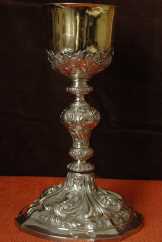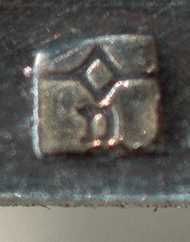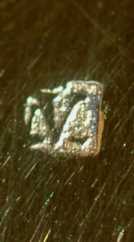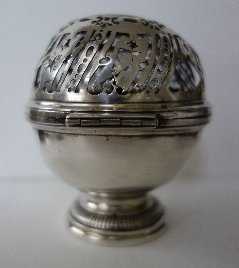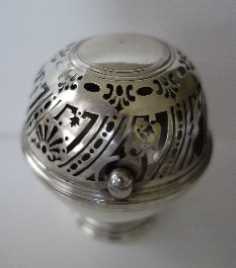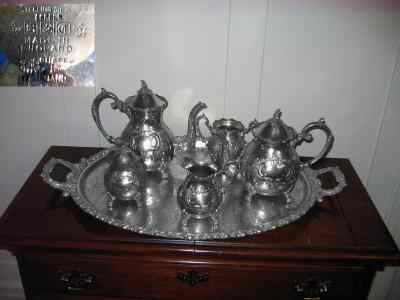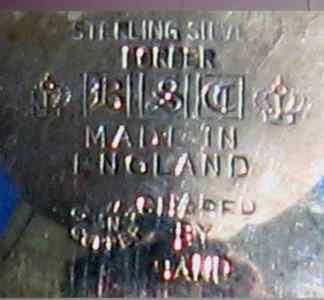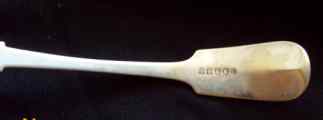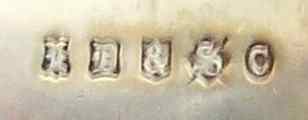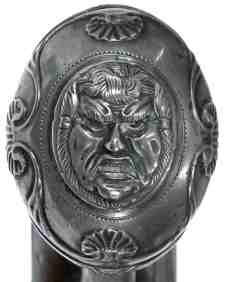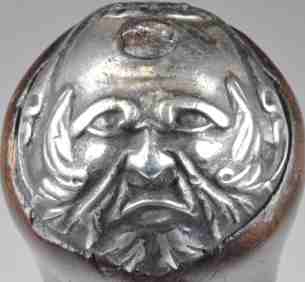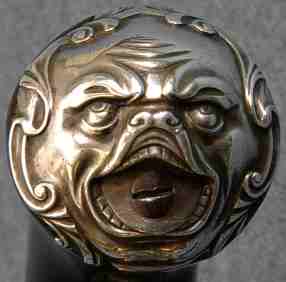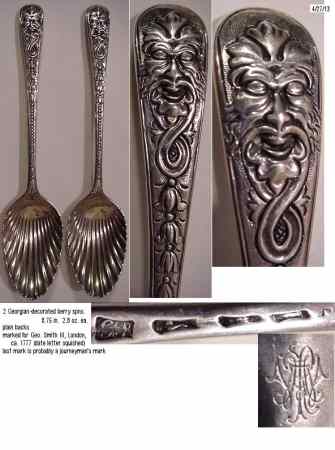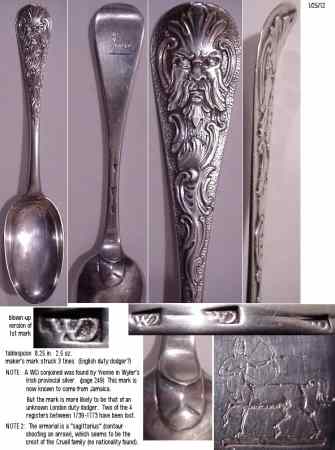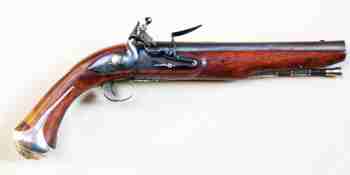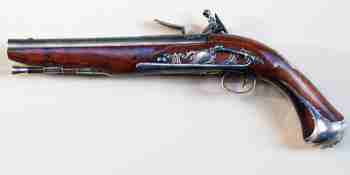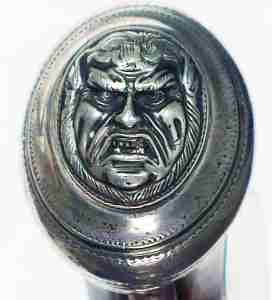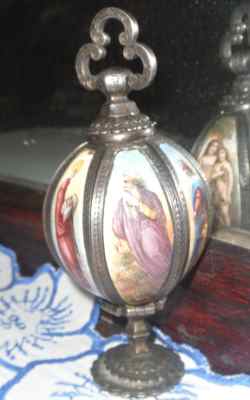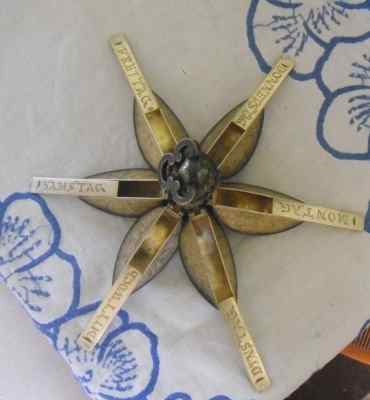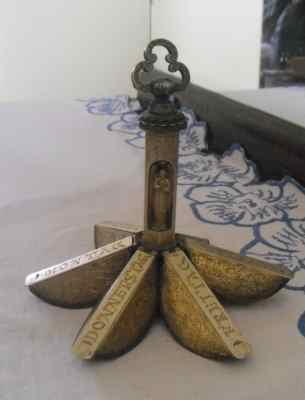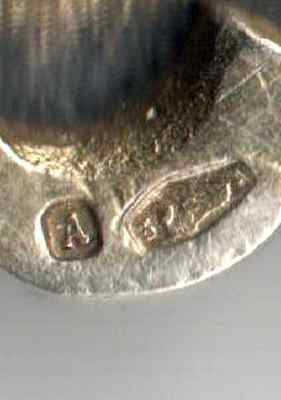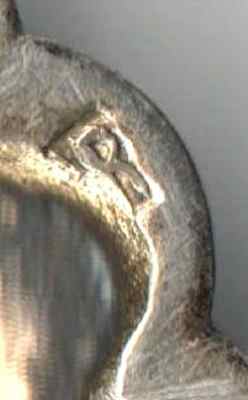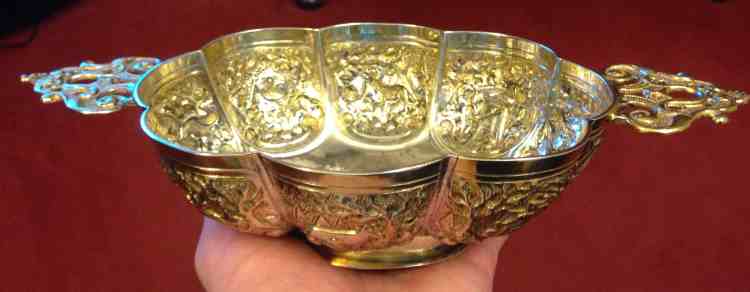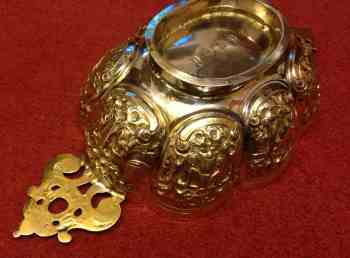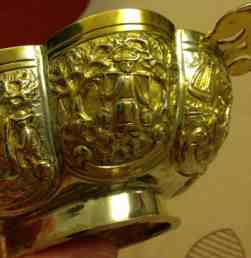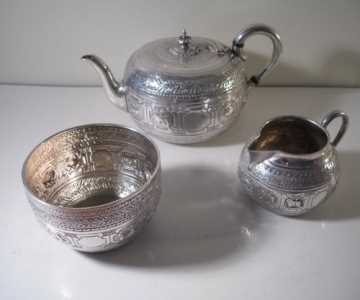
Graham Hodges presents:
Miniature Georgian Silver Sugar Tongs

One hears much discussion about miniature or "small"
Georgian silver sugar tongs. I do discuss the subject
briefly in my book, stating:
"Georgian sugar tongs will generally be between 5 & 6
ins long, the most common length being approximately
5.1/2 ins long. Bearing in mind that they were all hand
made, it is hardly surprising to note that the length is
never exact. The longest pair seen are about 6.1/4 ins
long, made by George Brasier and dated around 1790.
There are also some very short pairs, perfect in every
respect but only 3 to 4 ins long (I have even seen a
pair of Georgian sugar tongs made by Dorothy Langlands
of Newcastle that were only just over 2 ins long). There
are several theories to explain why tongs were made this
size, these include:
1. They were made for toy sets of silver-ware;
2. They were made as samples for travelling salesmen to
display the maker's arts;
3. They were made by apprentices and made smaller to use
less silver;
4. They were made for people to take on picnics, as part
of a "travelling" set of silver-ware;
5. A patron had specifically tasked the maker with a
commission for a smaller pair of tongs.
Any, or all, of these theories could be true, we will
probably never know. In any event, short sugar tongs are
quite rare, and do look very strange set against
standard Georgian tongs. There is no doubt that they are
genuine as they are fully hallmarked. It is also clear
that they have not been repaired, i.e. a broken piece
cut out. "...
click here

|
Welcome to new ASCAS members:
Katherine Davis - Australia
Anne Marie Hearn - Australia
Jill Lazard - South Africa
Alan Norris - USA
Claudio Pellegrino - Italy
Steven Leslie Peppet - England UK
Edmondo Sestini - Italy
Riccardo Bonardi writes:
... I have a silver chalice (height 27 cm.) with hallmarks of
the Kingdom of Belgium 1831/1868-fineness 950-guarantee large
object.
I need information about these two marks placed on its base (left)
and on the bowl (right).
Thanks
Riccardo Bonardi
Susan Pfau writes:
...I am writing in the hope that you may be able to identify
this silver piece.
It stands about 4" and is 3" across. There are no marks.
I've been told that it may be 18th c. French.
Any light you can shed will be appreciated.
Many thanks,
Susan Pfau
Your item is a sponge box, in the taste of similar objects made in France in the 18th century.
In ancient times the set consisted of two spherical boxes (a soap box and a
sponge box) often accompanying a silver shaving basin. The
decorative piercing on the sponge box allowed air to circulate
to dry the damp sponge. The unpierced box accommodated a piece
of soap, which, in the eighteenth century, was purchased in a
ball rather than a bar.
Giorgio Busetto
Patsy Suydam writes:
...I have a complete service... coffee, tea, sugar (2), creamer
and tray. On the bottom it is marked "Sterling Silver Border", "Made
in England" "Silver on Copper", " Chased by Hand". There are two
crowns and the letters BSC. I particularly wonder what "Sterling
Silver Border" means.... the rest I think to understand except
for the Old English letters BSC that I assume to be the
manufacturer.
Thanks
Patsy Suydam
I believe that Sterling Silver Border is the equivalent of
"Silver Mounts" sometimes used on electroplated ware (see my
website at
http://www.silvercollection.it/dictionarysilverplatesymbols.html
).
On the mark there is the word "quadruple" (not well readable).
"Quadruple plate" was used by American Manufacturers and not by
English manufacturers. Notwithstanding the "MADE IN ENGLAND" I
believe that your set is American, made by Birmingham Silver Co
Inc of Yalesville CT. See my website at
http://www.silvercollection.it/AMERICANSILVERPLATEMARKSBDUE.html
were I added the image of your mark.
I don't know if "MADE IN ENGLAND" was used to "embellish" the
origin of your set or the firm had some link with Birmingham or
England (but I didn't find any trace).
By the way, you quote "sugar (2)". But the "sugar (without lid)"
in the background is actually a "spoon holder", sometimes
present in late 19th/early 20th century American tea and coffee
sets.
Giorgio Busetto
Helen Gex Greer writes:
...I have a silver plate ladle that I've identified as having
marks from Deykin and Sons of Birmingham, UK. There are two
unidentified marks, one of which is a letter "C.". Would this
put it as being made about 1850?
There is an insignia "M" on the handle.
I have great-great-great grandparents whose last name was Myers
and they were married in upstate New York on 11 November 1856. I
suspect it was a wedding present.
Helen Gex Greer
Lisa Brown writes
In response to Peter Brower's request for dated 18th century
pieces with specific motifs, I have 2 examples of the green man
on Georgian spoons, but neither has a readable date mark (in one
the maker seems to have been a duty dodger; the other's date
letter is squished). Also, I'm not entirely sure that they weren't
later decorated, but I believe the decoration to be original to
the pieces.
Lisa Brown
Ludo D'Haese writes
Since you are interested in silver Pug masks, here is an
18th century English pistol.
The pistol is marked "IB" for James Barbar 'gentleman armorer to
king George II' from 1741 to 1762
The silver is marked with "I.K" for Jeremiah King London and a
date letter for 1746-1747.
Well, I hope you will enjoy the pictures.
Ludo D'Haese
Graham Stapleton writes
The pomander illustrated is particularly interesting, as it
has a difference from earlier examples.
Normally the lids to the segments are engraved with the names of
aromatic herbs or spices, but here we have the days of the week
- excepting Sunday.
Given the imagery, I wonder if was intended to hold small pieces
of The Host, so that a person could have Communion through the
week between Sunday Masses?
It could be for more mundane medicines, but I've yet to see a
weekly pill-box with less than seven compartments, further, I
feel that such boxes are a more recent development.
Graham Stapleton
Martin Leushuis writes
What Daniel Hardy is showing on his photos is called a
brandy bowl what we call in Dutch a 'brandewijnkom'
Martin Leushuis
Janjaap Luijt writes
Daniel Hardy's brandy bowl is probably Dutch, late 19th
century. The marks on the bottom are fake marks that have to
give the impression of being Frisian from the 17th century. But
actually the marks make no sense.
This kind of objects was made to be exported. Abroad there was a
great interest in Dutch 17th century antiques, but there were
not enough real antiques.
So silversmiths started to make look-a-likes with imaginary
marks.
If Daniel puts the brandybowl under better investigation, it is
possible that he will find the official hallmarks somewhere
hidden in the ornamentations of the sides.
Janjaap Luijt
Peter van Oel writes
Brandy bowl with a full row of Dutch pseudo or fake marks,
probably made in the Dutch province of Friesland or Groningen,
at the end of the 19th or early 20th century.
Dutch pseudo marks from left to right; crowns in a shield;
pseudo city mark of Sneek, lion rampant in a crowned shield;
pseudo standard mark used for 1st standard or 'grote keur' in
the province of Holland, P crowned; pseudo year-letter, crown
above an oak leaf: pseudo maker s mark and last but not least L
under a fat dot pseudo year letter for the city of Zwolle used
1798.
Please check your brandy bowl for some official (little) Dutch
hallmarks, those could be spread over the bowl and hidden in its
decoration.
Peter van Oel
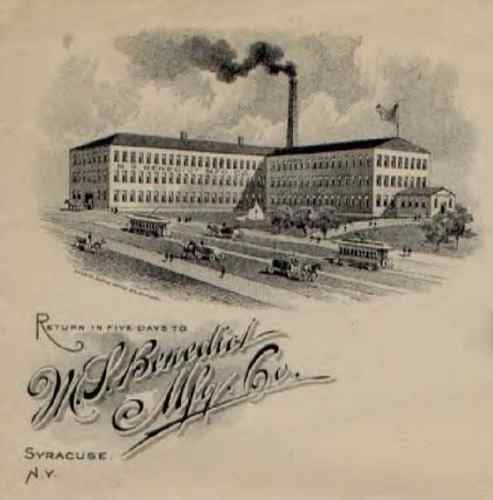
|
This month ASCAS presents an ancient image of the
factory of M.S. Benedict Mfg Co, Syracuse, NY
M.S. BENEDICT MFG CO
Syracuse NY
The business was founded in 1894 with M.Stewart Benedict
as president. The firm was incorporated in 1902 and
reorganized in 1906 as T.N. Benedict Mfg. Co.
This image (courtesy of Joanne Wiertella) is part of the
FACTORIES, PLANTS, SALESROOMS, SHOPS AND WORKSHOPS
section of www.silvercollection.it website
|
"A WORD per MONTH"
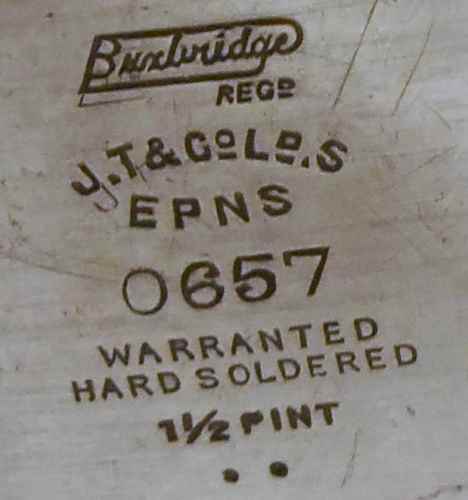
EPNS Electro Plated Nickel Silver
EPBM Electro Plated Britannia Metal
Modern electroplating was invented by Italian
chemist Luigi V. Brugnatelli in 1805. Brugnatelli used
his colleague Alessandro Volta's invention of five years
earlier, the voltaic pile, to facilitate the first
electro-deposition. Unfortunately, Brugnatelli's
inventions were repressed by the French Academy of
Sciences and did not become used in general industry for
the following thirty years.
Silver plate or electroplate is formed when a thin layer
of pure or sterling silver is deposited electrolytically
on the surface of a base metal. ......
more
|
"A SILVERSMITH per MONTH"
|
|
A.B. SAVORY - A.B. SAVORY & SONS
GOLDSMITHS' ALLIANCE LTD
Adey Bellamy Savory (member of
a family of Huguenot origin) established his business in
1812 at 14 Cornhill, City.
Until 1833 he was variously listed as goldsmith (1812),
dealer in foreign coins (1815) and spoons and forks
manufacturer (1831).
In 1833 his sons, Joseph Savory (Sr) and Albert Savory,
entered in the business and the firm changed its name to
A.B. Savory & Sons.
Their silver manufactory (gold and silver, jewellery,
electro and Sheffield plate, watches and clocks) was at
5 Finsbury Place South. Meanwhile they continued to
operate as dealers at various addresses in Cornhill.
In 1866 A.B. Savory & Sons was converted into a limited
liability company and changed the name to Goldsmiths'
Alliance Ltd. They operated in the new factory at 18 Red
Lion Street, Clerkenwell.
In 1893 the firm went voluntarily out of business and
the activity was incorporated by the Goldsmiths &
Silversmiths Co Ltd....
more
|
"A CREST per MONTH"
TURNBULL
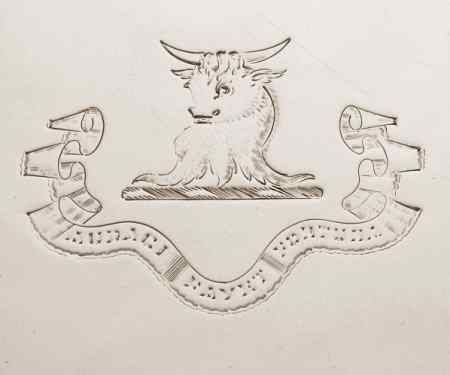
|
A Scottish family
A bull's head erased. The Latin motto is "Audaci favet
fortuna" (Fortune favours the brave)
The crest was found in a silver salver, hallmarked
London 1888, maker Goldsmiths' Alliance Ltd (Joseph &
Horace Savory)

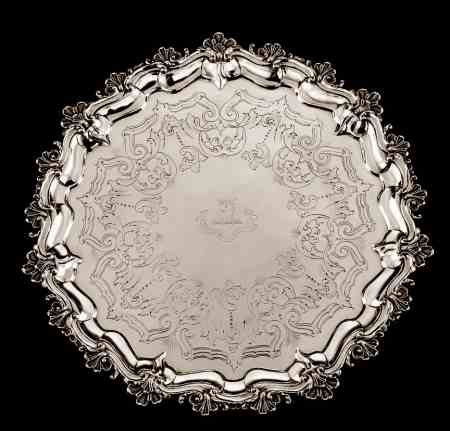
|
Closing our NOVEMBER 2013 edition of
ASCAS Newsletter I hope you have appreciated its content.
Your comments, suggestions and advice will be of great help.
My thanks to Riccardo Bonardi, Lisa Brown, Ludo D'Haese, Helen
Gex Greer, Graham Hodges, Martin Leushuis, Janjaap Luijt, Susan
Pfau, Graham Stapleton, Patsy Suydam and Peter van Oel for their
precious contributions.
Giorgio Busetto
Secretary
DISCLAIMER AND PRIVACY POLICY
ASCAS is a community of people having a common
interest in antique silver.
It is a non-profit association without commercial links.
Membership is open to whomever has a true interest in
this subject matter.
ASCAS has no real property and no fees are requested nor
accepted from members.
ASCAS keeps in touch with its members only through
periodical newsletters, e-mails and web-site updating
and ignores and is not responsible for any other
activity pursued by its members.
Likewise, ASCAS is not responsible for opinions,
evaluation and images displayed, and in any form
published or supplied for publication, by its members
who, in any case, maintain the property of their works
and assure the respect of national and international
legislation about Intellectual Property.
ASCAS does not have the full addresses of its members (only
town, country and e-mail address are requested for
membership).
ASCAS handles and protects with care its members' e-mail
addresses, will not disclose the addresses to third
parties, will use this information only to reply to
requests received from members and for communications
strictly related to its activity.
These rules are expressly accepted by submitting the
membership request.
|
|
 newsletter
# 114 November 2013
newsletter
# 114 November 2013









